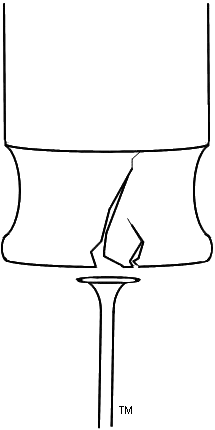The title in the
Journal of Experimental Biology is:
BEES RECOGNISE FACES USING FEATURE CONFIGURATION. That's a bit of an over-reach, which was pushed even further out over the edge by the NYT reporting on the study.
I personally think there is a high probability that bees possess "facial recognition" facilities. This is just a hunch, but if bees have "facial recognition" facilities, wouldn't the "facial features" recognized look like bee faces, and not human faces? I'm just sayin'.
In any event, it is a good study because it does show rather convincingly that bees are able to recognize patterns composed of combinations of
line-based features (the "faces" were stick-figure faces, with two dots for eyes, a slanted line for a nose, etc.).
That alone makes the study pretty great, but the experimenters very competently took the experiments further, and in so doing, made the study amazing. They showed that bees not only recognize arrangements of features, but classify them. That is, combinations of features that included slight differences, but continued to be configured similarly (i.e., continued to be arranged in the configuration of the "face metaphor") were recognized over randomly placed arrangements of dots and lines.
This demonstrates that bees were not only recognizing the component combinations and arrangements. They were also generalizing between various combinations of patterns, arranging them "conceptually" into a hierarchical classification model.
As stated, the line-feature arrangement recognition alone makes this (imo) a really fantastic "aha!" study. Adding the fairly clear (and well implemented) observational support for generalization and classification, sends it out into the street, yelling "eureka!" in the all-together. Why they felt the need to "punch it up" with a lot of market-speak about bees recognizing "pictures of human faces" is beyond my understanding.
Oh well. Still, a fantastic and important study, and discovery. Like all such discoveries, it not only answers a lot of questions, but opens the flood-gates for new ones.
It is clear (again imo) that bees construct an internal model of their world that is three dimensional. The fact that they possess stereoscopic vision is a strong indicator that a perception of some form of three-dimensional universe, containing three dimensional objects is lurking in there somewhere. It may be a very primitive perception, and may not be able to derive three dimensions from cues contained in 2-D photos, but it is still a safe bet, considering that their vision is stereo (sigh, in my opinion

).
. . . . . . .
Temporal Processing and its Relationship to Three Dimensions
Why not get rid of the face metaphor altogether (it is, after all, just a historical riptide, or "holdover", from primate behavior studies)?
Make two-sided cards** with dispensers for sugar. Put a different "feature" (a different ortho-contrast shape) on each of the two sides. Train the bees that a specific card with a combination of two specific features produces sugar (reward). Then set out the correct card, along with other cards to see if the bees congregate to the card with the two "correct" features. The bees can not see both shapes at the same time, and will have to perform some kind of temporal processing in order to "recognize" the correct card.
Reducing - Various methods could be used to tease apart the learning behavior from the recognizing behavior. For example, one can attempt to train the bees on the two shapes presented simultaneously (side-by-side), and then see if they will recognize them when placed on two sides of a card.
Expanding - This can then be expanded on by determining if the bees can be trained to congregate to, or avoid cards with various
combinations of two features. Even a card with only one of the two features would conceptually be a card with two different features (a blank card with no shape becomes a feature). More diverse combination forms could, for example, test for an inversion function, to determine if a card that has one correct shape, but NOT the other (or a "wrong" one for the other), could be learned as non-rewarding. Training on a variety of different combination-scenarios will suggest an extra layer of neural processing, which is also bound to temporality. Also, a given feature (such as a blank) could be taught as a special-case to classify, such that if there is a special shape it means there will NEVER be reward, and another special shape means there will ALWAYS be reward. One could also play games with sequence, in which one, or the other feature is the first the bee sees, forcing it to fly around the object to see the other feature second. Other forms of expansion would be the obvious case of simply adding more sides, by using blocks instead of cards.
Temporality - In all cases, this would primarily be testing the temporal component of learning and recognition. In each case, the bee will be required to fly around the card (or block) in order to see each separate individual feature. If the experiment is validated, this will strongly suggest a temporal component within the bee's neural processing.
- Avarguès-Weber, A., Portelli, G., Benard, J., Dyer, A.
and Giurfa, M. (2010). Configural processing enables
discrimination and categorization of face-like stimuli in
honeybees. J. Exp. Biol. 213, 593-601. [Abstract], [Full Text($)]
- BEES RECOGNISE FACES USING FEATURE CONFIGURATION - Overview (pdf)
- Journal of Experimental Biology
- John Lubbock
An early explorer of insect behavior, known for his famous experiments with bees and flies in a jar.
- Detection of Neural Activity in the Brains of Japanese Honeybee Workers during the Formation of a “Hot Defensive Bee Ball”
re: "Anti-predator behaviors are essential to survival for most animals. The neural bases of such behaviors, however, remain largely unknown."
-djr
===========
[footnotes]
** start with two sided cards, in accordance with
Ockham's advice.
 Stand Out Publishing
Stand Out Publishing
